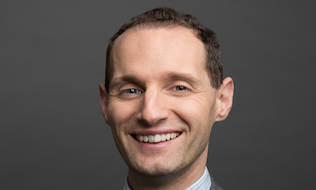
It’s hard not to feel at least some sympathy for an Alberta dental graduate coming out of school with $400,000 in debt.
In response to a recent story on BenefitsCanada.com about complaints about Alberta’s sky-high dental fees, the graduate noted the significant financial pressures resulting not only from school debts but also the cost of buying an established practice. Bankruptcy, the dentist suggested, was a possibility if the Alberta government got too aggressive in forcing practitioners to make significant fee cuts.
Read: CLHIA calls for further action following release of Alberta dental fee guide
On the other hand, ordinary Albertans find themselves caught in the middle. They’re on the hook for the costs over and above what their benefits plans will cover. Most aren’t as lucky as those at Calgary-based H&R Block Canada Inc., which significantly boosted its dental plan amid employee complaints about their coverage levels in light of the fees charged by dentists. And a long-awaited fee guide published by the Alberta Dental Association and College in August offered little relief. As a story on BenefitsCanada.com noted, suggested fees for several common dental procedures were still double those in British Columbia.
Alberta dentists, of course, have long suggested the higher fees are a result of the expense of doing business in that province. An Alberta government review of the dental industry last year did, in fact, find costs are higher than in other provinces. Using data from Statistics Canada, for example, the report noted wages for dental hygienists were up to $18 higher than in other provinces. Rent and other office costs were also higher in Alberta than in Ontario and British Columbia. But interestingly, Alberta costs were generally in line with Saskatchewan, a province where, as a Benefits Canada story noted last year, dental fees were notably lower.
Read: How do Alberta’s dental fees compare to other provinces?
The issue, then, presents a conundrum. It’s reasonable to charge more when an economic boom tightens labour markets to the extent Alberta experienced for several years prior to the rapid decline in the price of oil. The boom, however, is over. But how easy is it for dentists to now scale back their costs?
There’s no easy answer, but many possible solutions have been on the table for some time. Industry participants have long touted the need for a fee guide, but the document released in August did little to quell the complaints. With suggested fees declining only slightly, critics slammed the association and college for doing too little. Transparency would be a big help. While consumer education and awareness are useful, it’s unrealistic to expect patients to truly understand how to control their costs and be willing to challenge their dentists about treatment recommendations and fees. So finding some way to encourage greater transparency about pricing while clarifying the confusion over advertising by dentists would help.
Read: ‘Astronomical’ dental fees among factors behind Alberta-based company’s benefits boost
Also, it’s time to put an end to the association and college’s dual role as an advocacy and regulatory body. There’s no guarantee such an action would reduce dental fees, but it’s an obvious step that would address the appearance of a conflict of interest.
Finally, there’s the option of the province actually regulating dental fees. It sounds extreme and unlikely, but if the steps taken so far and those on the horizon fail to make a difference, it’s something the government should at least consider as a way to overcome the conundrum over dental fees.
Glenn Kauth is the editor of Benefits Canada.
Get a PDF of this article.
